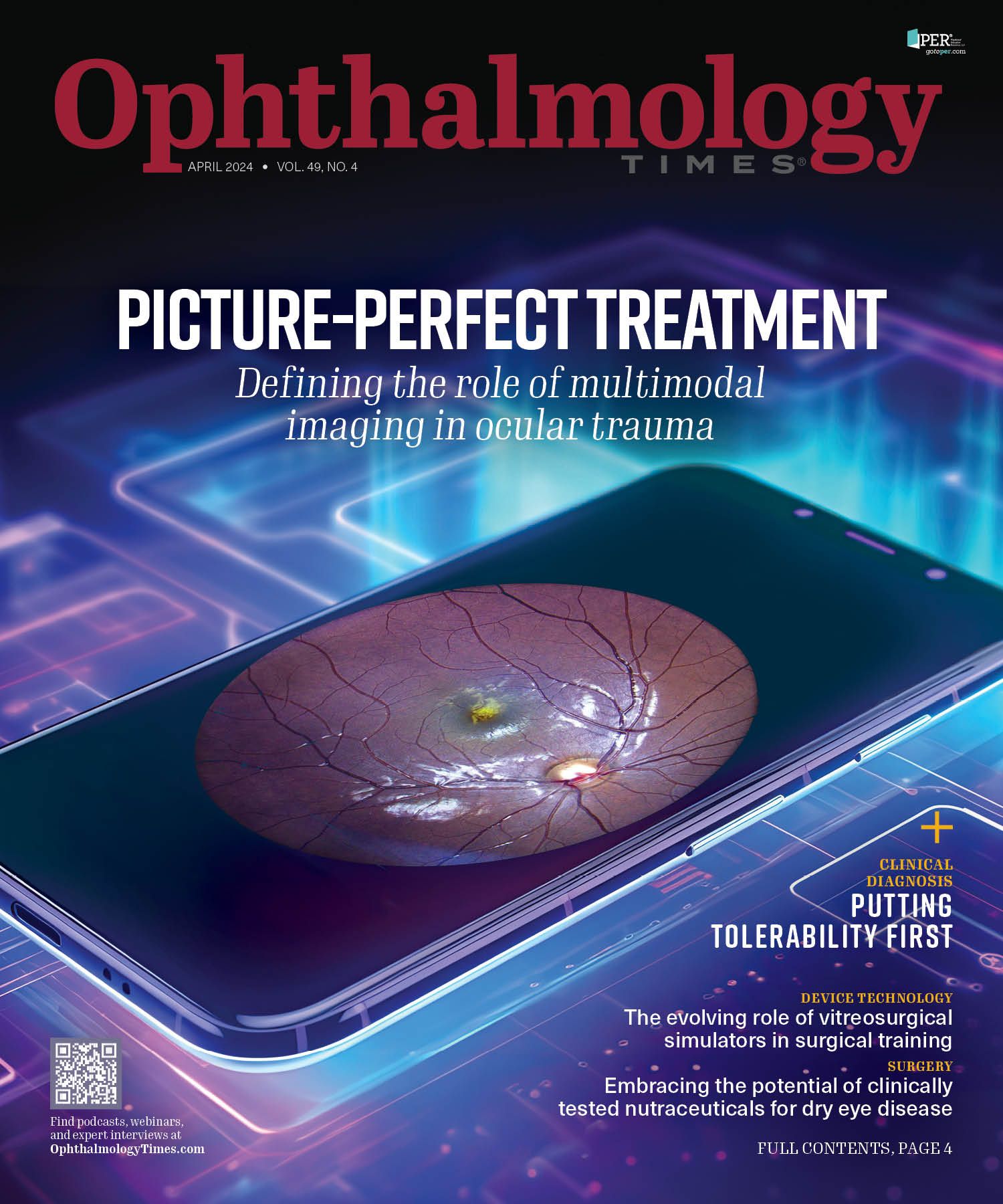Treatment challenges in patients with nAMD
David Eichenbaum, MD, discusses his experiences with aflibercept, faricimab.
(Image Credit: AdobeStock/sakramir)

Reviewed by David Eichenbaum, MD
David Eichenbaum, MD, from Retina Vitreous Associates of Florida and the Morsani College of Medicine at the University of South Florida, Tampa, discussed challenging cases of neovascular age-related macular degeneration (nAMD) recently at a case-based roundtable exchange.
Case 1
Case 1 was that of a typical patient with exudative AMD who presented with acute vision loss to 20/63, a pigment epithelial detachment (PED), and subretinal fluid. Eichenbaum generally starts such patients on aflibercept (Eylea; Regeneron) or faricimab (Vabysmo; Genentech), based on insurance coverage.
In this case, he started the patient on aflibercept 8 mg with the goal of flattening the PED. Aflibercept has good drying ability and durability with treatment intervals tested out to every 16 weeks in the first year of treatment.
The second injection was scheduled for 4 weeks after the first, at which time the patient had a substantial improvement in vision and anatomy, with complete flattening of the PED. Generally, Eichenbaum uses a loading dose series of about 3 injections for almost all treatment-naive patients.
After the third injection, the patient was extended out to 8 weeks. Eight weeks after the third injection, the patient looked “fantastic” with no subretinal fluid. The patient then was extended to 12 weeks.
Eichenbaum’s goal is to abolish all intraretinal and subretinal fluid. He explained that intraretinal fluid is probably the most detrimental for long-term anatomy, and select patients can tolerate some subretinal fluid and maintain good vision. He advised that if patients are not dry after the loading dose to treat more aggressively early in their course of disease, which is a window of time when vision can be restored. Once they are dry, he tries to extend the treatment intervals.
If patients are not dry after the loading dose, he switches to another treatment. He also switches agents if the patients do not obtain good durability. “I will try to use a second-generation agent as in this patient. I like to have them on 1 of those 2 second-generation agents when I’m trying to extend their treatment interval, especially if I can’t do that using bevacizumab [Avastin; Genentech], ranibizumab [Lucentis; Genentech], or aflibercept 2 mg,” he explained.
Eichenbaum’s volume of experience commercially with faricimab and aflibercept 8 mg differs. Faricimab has been available for 2 years and aflibercept 8 mg for several months, so he has had more experience with faricimab. He uses both drugs and believes both are superior to the first-generation agents, including ranibizumab and aflibercept 2 mg. “The anatomic response, potency, and durability are greater with the second-generation drugs,” he said.
Case 2
This 88-year-old man started treatment in 2015 for bilateral nAMD. He started on bevacizumab and currently has been on aflibercept 2 mg for an extended period. He is treated every 5 to 6 weeks in his better right eye with 20/63 vision and has some chronic intraretinal fluid. Eichenbaum does not want to extend the treatment interval because of the low-level activity in this better eye. In June 2023, he was switched to aflibercept 8 mg. Eichenbaum wanted to extend the patient to 6-week intervals rather than 5-week intervals to assess his status with aflibercept 8 mg at the patient’s longest-tolerated interval. The vision was 20/50 after this treatment at 6 weeks and likely the best he could achieve; the patient was dry and free of intraretinal fluid.
When treatment was extended to 8 weeks, the patient continued to do well. Eichenbaum is happy to give him the gifts of time and good anatomy.
“I feel comfortable extending both aflibercept 8 mg and faricimab out to their protocol-defined long range at 12 or 16 weeks,” he said and pointed out that during year 2 of the PULSAR aflibercept 8-mg registration trial (NCT04423718), patients were extended out to 20 and 24 weeks, but he has not extended his patients out that far with the 8-mg dose yet.
When patients are stable over an extended period such as 20 weeks, he may suggest stopping treatment but recommends evaluating them more often for recurrences if treatment is halted, which increases the visit burden. Some patients may prefer a long-interval maintenance shot rather than returning for more frequent observation visits.
He also explained that it can be hard to choose between aflibercept 8 mg and faricimab because they both are good drugs.
“We don’t have clear guidance regarding which way to go when choosing between the 2 drugs. Aflibercept is very potent and seems very safe in the registration trial and in the real-world setting,” he said “Faricimab has the dual inhibitory activity and is very safe, with 2 million doses administered in the real world. It is hard to say which one to use or which one to switch to.”
Eichenbaum said he uses both drugs and the hope is that clinicians will eventually be able to determine which patients do better on one or the other.
“I believe there is a patient population currently receiving first-generation drugs like aflibercept 2 mg every 6 or 8 weeks who would profoundly benefit from switching to a second-generation agent and then being treated every 8, 10, or 12 weeks,” he said.
Takeaway messages
“We are just learning about these agents. Many doctors in the community are still not using second-generation agents as primary therapy. I think that over time they will become first-line therapy and used earlier in the treatment algorithm,” Eichenbaum said.
Moreover, Eichenbaum also concluded that he also hopes that faricimab and aflibercept 8 mg will become available in prefilled syringes.

David Eichenbaum, MD
E: deichenbaum@rvaf.com
Eichenbaum is the director of research at Retina Vitreous Associates of Florida and a volunteer collaborative associate professor at USF Health Morsani College of Medicine in Tampa, Florida. He is a speaker, consultant, and investigator for numerous companies and an equity holder/stockholder in Janssen, Network Eye, ReVive, and USRetina.
